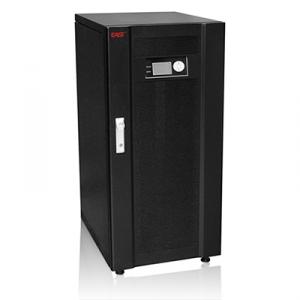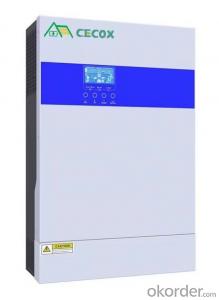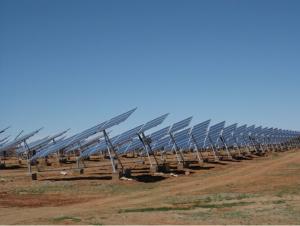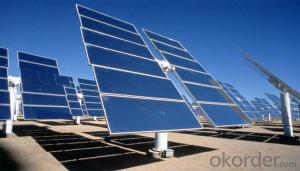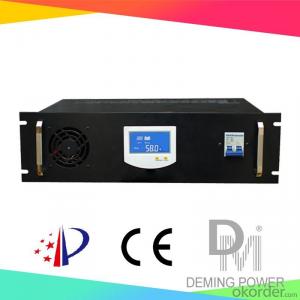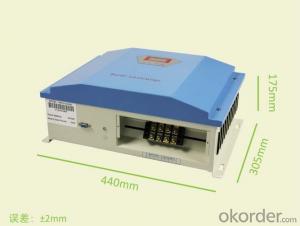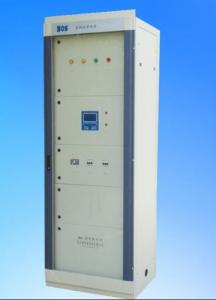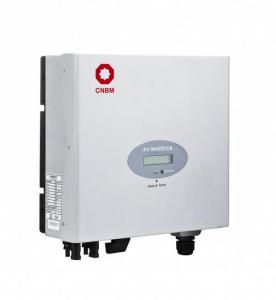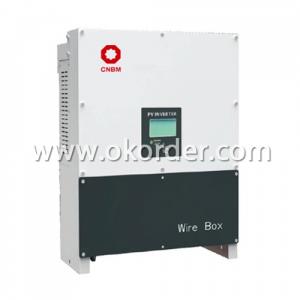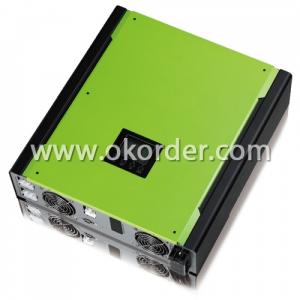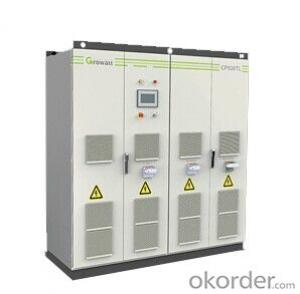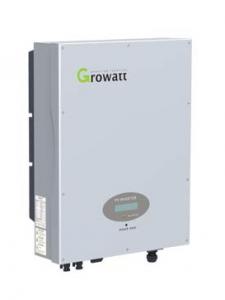High Power MPPT Solar Charge Controller Off-Grid Solar Power Systems with Solar Inverter 8kw
- Loading Port:
- China main port
- Payment Terms:
- TT or LC
- Min Order Qty:
- 1 pc
- Supply Capability:
- 1000 pc/month
OKorder Service Pledge
OKorder Financial Service
You Might Also Like
| High Power MPPT Solar Charge Controller |
GSC Series modular MPPT solar controller unit is a complete solar energy conversion, tracking, protection combined systems, this series product is developed depending on the needs of green power by EAST company. The solar energy collected by the PV panel is transferred into stable DC power output, advanced Maximum Power Point Tracking Technology (MPPT)and intelligent battery management system,intelligent monitoring system can be connected to PC by RS232/USB/RS485,remote monitoring by SNMP. Suitable for a variety of off-grid solar power systems. |
Efficient and stable,maximize the output power
● High power modular design,can parallel 8 pcs,maintenance is simple and fast, efficient and reliable system for easy expansion.
● High speed DSP the core control system and MPPT Maximum Power Point Tracking Technology,ensuring maximum output power of the system, improving the power generation efficiency of photovoltaic panels.
● Advanced multi-level control technology, switching losses smaller, more efficient.
● Professional cooling duct design, effectively discharge machine heat, to ensure stable operation of the controller
● Multiple input for the system, suitable for a variety of applications, roof, slope system.
Perfect protection design, safe and reliable
● Foolproof design is used in the system,ensure modules hot-swappable safety, providing safety operating for modules.
● PV input/output over/under voltage、PV reverse 、output anti-anti-irrigation、over temperature and other protections.
Smart battery management system
● Best charging mode can be used depending on battery type and capacity, to extend battery life.
● Over charging and over discharging protections.
Unattended and intelligent monitoring:
● After battery low voltage and automatically shut down, PV comes back,system will auto restart and charge the battery.
● RS232、USB and RS485 bus interface are available, real-time monitoring, testing can be done by communicating with PC,
SNMP(optional)net system is also available for remote real-time monitoring.
Model | GSC110-240 | GSC336-384 |
PV Input Range | 1-8 | |
Single Max Input Power | 0-500Vdc | 0-750Vdc |
Battery Numbers | 7KW-17KW | 24KW-27.5KW |
Max Charging Current | 55-120pcs can be set(2V per pcs) | 165-192pcs can be set(2V per pcs) |
Max Charging Current | 60A/120A/180A/240A/300A/360A/420A/480A | |
Equalizing Charging Voltage | (each one 2.4V)±1% | |
Float Charging Voltage | (each one 2.3V)±1% | |
Temperature Compensation | The voltage increases 2mV while temperature decrease 1℃ | |
Shared Parameters | ||
Max Efficiency | > 98% | |
Static Losses | < 5% (system rated current) | |
MPPT Accuracy | 0.99 | |
Dynamic Response | 25%-50%-25% or 50%-75%-50% load change 3ms | |
Display | LCD + LED | |
Cooling | Forced ventilation (fan speed changes with load) | |
Noise | ≤60dB | |
Protection | PV reverse、BUS over voltage、output over voltage、output reverse、 | |
PV over / under voltage | ||
Communication | RS232 / RS485 / SNMP card(optional) | |
IP Level | IP20 | |
Operating Temperature | From -20℃ to +45℃ | |
Humidity | 0-95% (non-condensing) | |
Storage Temperature | From -25℃ to +85℃ | |
Attitude | 1000m with rated power (increase 100m, reduce power 1%) Max.4000m | |
Dimensions (WxDxH mm) | 500x620x1050 | |
Packing Dimensions (WxDxH mm) | 585x710x1110 | |
Weight(kg) | Frame: 80kg ; MPPT power module: 5kg/unit | |
· Q. What is an UPS and What it is for ?
An uninterruptible power supply (UPS) is a device that allows your computer or telephone switch or critical equipement to keep running for at least a short time or longer time when the primary power source is lost. It also provides protection from power surges, spikes, brownouts, interference and other unwanted problems on the supported equipment.
· Q. How long the UPS to run when power goes?
This can take 3 paths.
1.You can pick a UPS that is rated for pretty much the full VA you need so it will be running at 100% of capability and will thus last 'n' minutes.
2.You can pick a UPS that is rated at a much higher VA value than you really need so, for example, is running at 50% of capability and will thus last for longer than the UPS from option 1.
3.You can use extra external battery packs to run for longer. If charging capability allows, the more and the bigger batteries you take with, the longer time UPS runs.
or using a generator after about 6 hours, it will be more cost-effective, with a short runtime UPS to bridge the generator start-up gap.
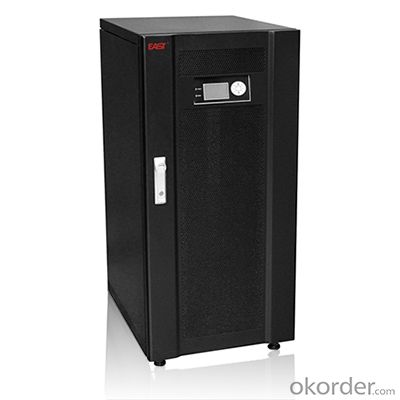
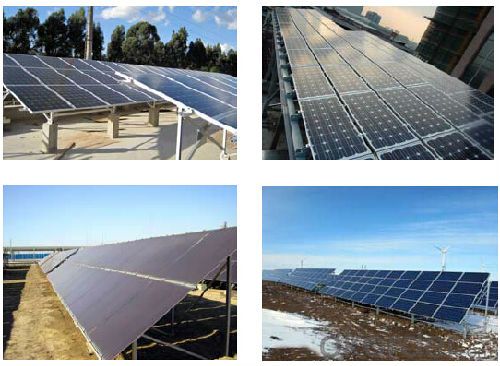
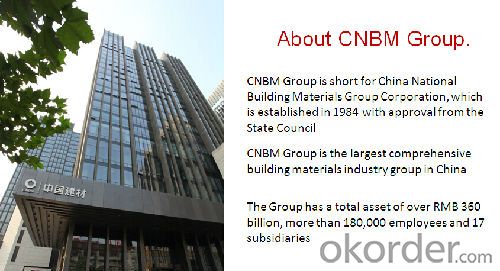

- Q: Can a solar inverter be used with a solar-powered educational system?
- Yes, a solar inverter can be used with a solar-powered educational system. A solar inverter is a device that converts the direct current (DC) generated by solar panels into alternating current (AC) that can be used to power various electrical devices. In the case of a solar-powered educational system, the solar inverter would play a crucial role in converting the DC power generated by the solar panels into usable AC power for running electronic equipment such as computers, projectors, and other educational tools.
- Q: How does a solar inverter handle voltage fluctuations from the grid?
- A solar inverter handles voltage fluctuations from the grid by continuously monitoring the grid voltage and adjusting its output accordingly. When the grid voltage fluctuates, the inverter uses its internal control mechanisms to stabilize the output voltage, ensuring a consistent and stable supply of electricity to the connected solar panels or the grid. This helps protect the solar system from potential damage caused by voltage variations and allows for efficient power generation and distribution.
- Q: Can a solar inverter be used with other renewable energy sources like wind or hydro power?
- Yes, a solar inverter can be used with other renewable energy sources like wind or hydro power. Inverters are designed to convert the direct current (DC) generated by these renewable sources into alternating current (AC) that can be used to power homes or businesses. By integrating multiple renewable energy sources through a single inverter, it becomes possible to create a more diverse and reliable renewable energy system.
- Q: What is the role of a maximum power point tracker in a solar inverter?
- The role of a maximum power point tracker (MPPT) in a solar inverter is to constantly monitor and adjust the output voltage and current from the solar panels to ensure they are operating at their maximum power point. By tracking and maintaining this optimal operating point, the MPPT increases the overall energy efficiency and power output of the solar system. This is particularly important as solar panel performance can be affected by various factors such as shading, temperature, and varying sunlight intensity.
- Q: What is the cost of a solar inverter?
- The cost of a solar inverter can vary depending on the brand, size, and features. On average, a basic solar inverter can range from $500 to $2000. However, more advanced or larger capacity inverters can cost upwards of $5000. It is important to consider the quality and efficiency of the inverter when determining its cost as it plays a crucial role in the overall performance of a solar power system.
- Q: What is the role of a solar inverter in reactive power compensation?
- To regulate and control the flow of reactive power in a solar power system, a solar inverter plays a crucial role in reactive power compensation. The presence of inductive or capacitive elements in the system causes reactive power to oscillate between the source and load. Although this power does not contribute to the actual work done by the system, it is necessary for the operation of specific devices. A solar inverter, specifically designed for reactive power compensation, is capable of measuring the reactive power in the system and adjusting its operation accordingly. It has the ability to generate or absorb reactive power as needed to maintain a power factor close to unity. The power factor is a measure of the efficiency of electrical energy utilization, and a high power factor indicates efficient electricity usage. By compensating for reactive power, a solar inverter ensures that the solar power system operates at optimal efficiency. It alleviates the burden on the grid by locally supplying or absorbing reactive power instead of relying on the grid for compensation. This not only improves the overall quality of power but also reduces system losses. Furthermore, it helps stabilize voltage levels and minimize voltage fluctuations, which can be advantageous for delicate electrical equipment. In conclusion, the role of a solar inverter in reactive power compensation is vital for regulating the flow of reactive power in a solar power system, maintaining a high power factor, and improving overall system efficiency. It plays a pivotal role in ensuring the optimal operation of the solar power system and diminishing the dependence on the grid for reactive power compensation.
- Q: How does a solar inverter handle voltage and frequency variations caused by grid disturbances?
- A solar inverter is designed to handle voltage and frequency variations caused by grid disturbances by regulating and stabilizing the incoming AC power from the grid. It constantly monitors the voltage and frequency levels of the grid and adjusts its internal components accordingly to ensure that the power being generated by the solar panels is synchronized with the grid. In cases of voltage or frequency deviations, the inverter employs advanced control algorithms to rectify the imbalances and maintain a steady flow of power to the grid. This helps to protect the electrical appliances and equipment connected to the grid from potential damage and ensures the stability and reliability of the overall power system.
- Q: Can a solar inverter be used with any type of solar panel?
- No, a solar inverter cannot be used with any type of solar panel. The compatibility between the solar inverter and solar panel depends on the type and specifications of both the inverter and the panel. It is important to ensure that the inverter is designed to work with the specific type and voltage of the solar panel to ensure optimal performance and efficiency.
- Q: What is the maximum number of parallel inverters that can be installed in a solar system?
- The maximum number of parallel inverters that can be installed in a solar system depends on the specific requirements of the system and the available infrastructure. There is no fixed limit, as it varies based on factors such as the size of the system, the capacity of the inverters, the electrical load, and the design limitations. It is best to consult with a solar system designer or engineer to determine the optimal number of parallel inverters for a particular solar installation.
- Q: What is the role of fault ride-through capability in a solar inverter?
- The fault ride-through capability in a solar inverter is essential as it allows the inverter to remain connected to the grid during grid disturbances or faults. This capability ensures that the inverter can ride through and withstand voltage sags or dips in the grid, maintaining stability and continuous power generation. By providing this capability, the inverter helps to enhance grid reliability, prevent power disruptions, and contribute to the overall stability of the electrical system.
Send your message to us
High Power MPPT Solar Charge Controller Off-Grid Solar Power Systems with Solar Inverter 8kw
- Loading Port:
- China main port
- Payment Terms:
- TT or LC
- Min Order Qty:
- 1 pc
- Supply Capability:
- 1000 pc/month
OKorder Service Pledge
OKorder Financial Service
Similar products
Hot products
Hot Searches
Related keywords
